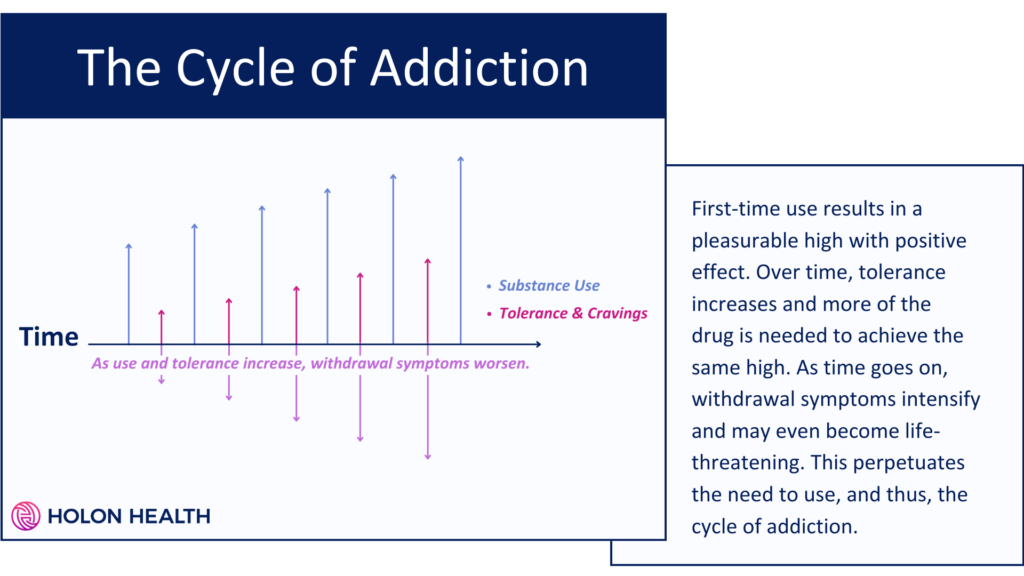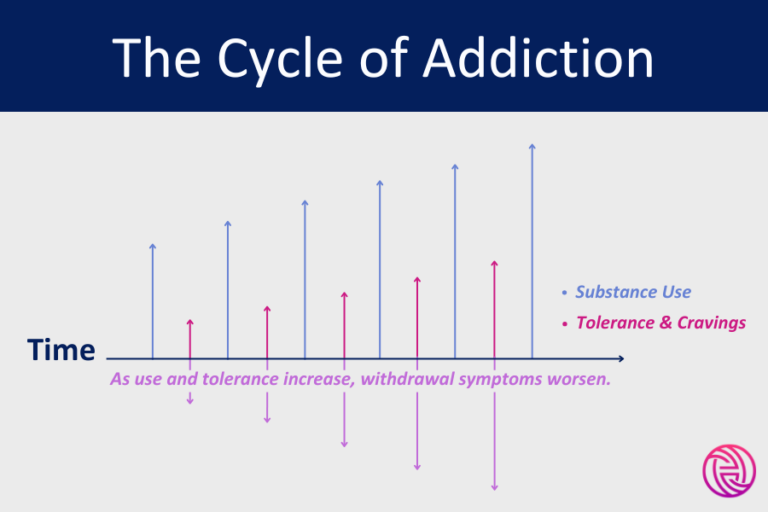Our goal is to provide education and insight on healthcare topics related to Substance Use Disorder. To ensure we provide accurate and trustworthy information, our writers follow strict editorial guidelines.
What is Substance Use Disorder?
Substance Use Disorder (SUD), also known as addiction, is a chronic medical condition characterized by an uncontrollable urge to use drugs, alcohol, or any other addictive substances despite negative consequences. Those living with Substance Use Disorder typically find it challenging or seemingly impossible to control their substance use and this inability to cut down or stop use often causes significant problems in their life.
According to the National Center for Drug Abuse Statistics, data from the Substance Abuse and Mental Health Services Administration (SAMHSA) 2020 National Survey of Drug Use and Health indicates that almost 60 million people have used illegal drugs or misused prescription drugs, which is 21.4% of the total population in the US. Fifty percent of people age 12 and older have tried an illicit drug at least once. Sadly, nearly one million people have died from a drug overdose since 2020.
Drugs that are frequently involved in SUD include:
- Alcohol
- Opioids like heroin and fentanyl
- Benzodiazepines like Xanax and Klonopin
- Hallucinogens like LSD, MDMA, and Ecstacy
- Stimulants like cocaine and methamphetamine
Substance Use Disorder Risk Factors
There’s a variety of risk factors for substance use disorder and it’s important to note that SUD can happen even when there is no family history of addiction. Research has shown that the likelihood of substance use does increase if there is a family history but there are a number of other unrelated risk factors.
Risk factors of SUD:
- Family history: having a genetic component to addiction can increase your likelihood of struggling with substances.
- Proximity to drug/alcohol use: exposure to drug use, peer pressure, and/or a lack of support around infrequent use or abstinence.
- Mental health conditions: anxiety, depression, and PTSD can all increase the likelihood of SUD
- Use that started at a young age: substance use that began at a young age may make individuals more prone to developing SUD
- Stress: trauma, life events, or even work stress can increase risk
- Social isolation: a lack of support can contribute to SUD
- Adverse Childhood Experiences: also referred to as ACEs.
Signs and Symptoms of Substance Use Disorder
Sometimes, it’s easy to tell if someone is struggling with addiction and substance use. Other times, it’s trickier to stop. The Diagnostic and Statistical Manual of Mental Disorders (DSM-5-TR) contains the exact criteria but below is a list of common signs.
- Cravings and strong urges to use
- Loss of control and inability to control use
- Use that increases in length or amount
- Increased tolerance to the substance of choice
- Loss of control with use
- Physical withdrawal symptoms when not using
- Missing major obligations at work or home
- Withdrawing from friends and family
- Neglecting responsibilities
- Continued use despite harm and negative consequences
- Loss of interest in previously enjoyable activities
Common symptoms of Substance Use Disorder include:
- Altered mental state
- General confusion
- Forgetfulness
- Neglecting to eat
- Withdrawal
- Changes in mood and behavior
- Engaging in risky behaviors
- Anger or denial when confronted about use
- Secretive behavior
- and more
The Cycle of Addiction
Substance use disorder and addiction can be confusing if you aren’t familiar with it. But, the cycle of addiction is pretty easy to understand once you break it down. As a person uses more of a substance, their tolerance and cravings increase. At the same time, the withdrawal symptoms they experience worsen. This perpetuates the need to use, as withdrawal symptoms may even become life-threatening. This is what we call the cycle of addiction.

Types of Treatment For Substance Use Disorder
Luckily, there are a number of treatment options for individuals struggling with substance use disorder. From medication-assisted treatment (MAT) to outpatient programs, there are options to suit each person.
Detox
For those needing assistance with controlling immediate use, detox can be helpful. There are also some substances that may require medical detox, such as opiates, benzodiazepines, alcohol, and methamphetamines. Detox is medically supervised withdrawal followed by helpful interventions to decrease future use.
Medication-Assisted Treatment (MAT)
Medication-assisted treatment involves the use of prescribed medications to help reduce cravings and use. Medications used commonly include methadone, buprenorphine (Suboxone), and naltrexone. These work to reduce cravings and withdrawal symptoms as the individual learns the behavioral skills needed to stay in recovery.
Behavioral Therapies like CBT, SFT, CM, and MI
Cognitive-behavioral therapy (CBT), solution-focused therapy (SFT), contingency management (CM), and motivational interviewing (MI) are used to change patterns of thinking and behavior related to substance use. These therapies are delivered either 1:1 or in a group setting.
Support Groups Like AA and NA
Peer support groups such as Alcoholics Anonymous (AA) or Narcotics Anonymous (NA) provide a community and support network.
Inpatient Rehabilitation
For those needing a higher level of care, residential treatment programs provide comprehensive and supervised care, including therapy, medical care, and support.
Outpatient Programs
Outpatient programs allow for a higher level of independence than inpatient programs. Individuals receive treatment while living at home and continuing with their daily activities. Outpatient programs include options like Intensive Outpatient Programs (IOP) and Partial Hospitalization Programs (PHP).
Recovery Tips for Substance Use Disorder
Making the decision to start treatment is deeply personal and often a challenging decision. If you or someone you love has chosen recovery, here are some helpful tips and tricks to maintain long-term sobriety.
- Seek professional help, whether that’s therapy or a higher level of care to address underlying issues and to learn coping strategies.
- Build a support network that is understanding and present.
- Stay active! Engaging in physical activities can improve your mood and reduce stress.
- Develop a daily to routine so you have structure
- Avoid triggers by steering clear of people and places that remind you of using.
- Set realistic goals that you can achieve–this will keep you motivated and moving forward.
- Prioritize self-care to promote physical, mental, and social wellbeing.
- Reduce stress by practicing healthy coping skills like meditation, yoga, or other hobbies.
- Educate yourself on addiction and recovery so you know the process.
- Stay positive and focus on your progress!
Starting and Staying in Recovery
You got this! Remember to take your recovery journey one day at a time. Starting is something to be proud of! Give yourself grace if you make mistakes but get back on track quickly. Surround yourself with people who are going to celebrate your success and support your long-term goals for a healthy lifestyle. If you need more support on your recovery journey and are involved with the criminal justice system, reach out to us or call (877) 465-6650.



